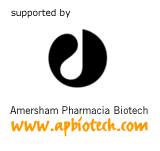
| Nature Science Update is an entertaining, informative and accessible round-up of what's new in the world of science brought to you by the Nature News Service -- the popular science syndication arm of the leading international science journal Nature. |
| To find out about buying news and features like this for your website or news paper please e-mail:mailto:syndication@nature.com |
brain: Instant gratification centre found?
JONATHAN TROUT
 |
| Having your cake and eating it: how we make
rewarding decisions. © Photodisc |
Would you rather have one slice of cake now, or a whole cake later? Cambridge University researchers may have found the brain region that makes this choice. The discovery could aid our understanding of impulsiveness conditions such as attention deficit/hyperactivity disorder (ADHD) and drug addiction.
Rudolf Cardinal and his team have found that rats with lesions in an area of the forebrain involved in reward, the nucleus accumbens core (AcbC), become more impulsive — they always chose a more immediate, smaller reward over a bigger, later one1. The finding suggests that damage to this brain area could contribute to behavioural disorders characterized by the urge for instant gratification.
Drugs such as amphetamine and cocaine act on the AcbC, altering levels of the neurotransmitter dopamine. The same is true of Ritalin, the controversial drug widely used in American schools to control hyperactive and inattentive children. The researchers propose that a healthy AcbC is required to fight off the urge for instant gratification2.
The group trained rats to chose between two levers. One delivered a small food pellet immediately, the other a larger pellet after a variable delay. The researchers then gave trained rats lesions either in the AcbC or in an unrelated part of the brain, as a control. Untreated and non-AcbC-lesioned rats acted as expected, with the likelihood of choosing the delayed reward decreasing as the delay grew bigger. AcbC-lesioned rats only pressed for the immediate reward, no matter how short the delay.
They also exhibited symptoms "quite parallel" to the hyperactive/impulsive type of ADHD (ADHD-HI) — they moved more than usual and had short attention spans.
ADHD researcher Terje Sagvolden of the University of Oslo, Norway, is enthusiastic about the research. "It suggests a new animal model for ADHD-HI," he says. This could, he believes, result in better treatment of impulsive disorders in the future.
His praise is echoed by neurophysiologist Wolfram Schultz at the University of Fribourg in Switzerland. The work is "a major extension" of the idea that the AcbC is a reward centre, and "the first associating it with impulsivity," Schultz says.
Now Cardinal's team hope to investigate why the lesions made the rats impulsive: did the animals not realize that the delayed reward was available, or did they just not value the delayed reward as much as the immediate one? The group also intend to look at reward-related areas of the brain, such as the amygdala, which is involved in fear.
- Cardinal, R. et al. Impulsive choice induced in
rats by lesions of the nucleus accumbens core. Science
292 (2001).
- Sagvolden,T. & Sergeant,J.A. Attention
deficit/hyperactivity disorder - from brain dysfunctions to behaviour.
Behavioural Brain Research 94, 1–10 (1998).
© Macmillan Magazines Ltd 2001 - NATURE NEWS SERVICE